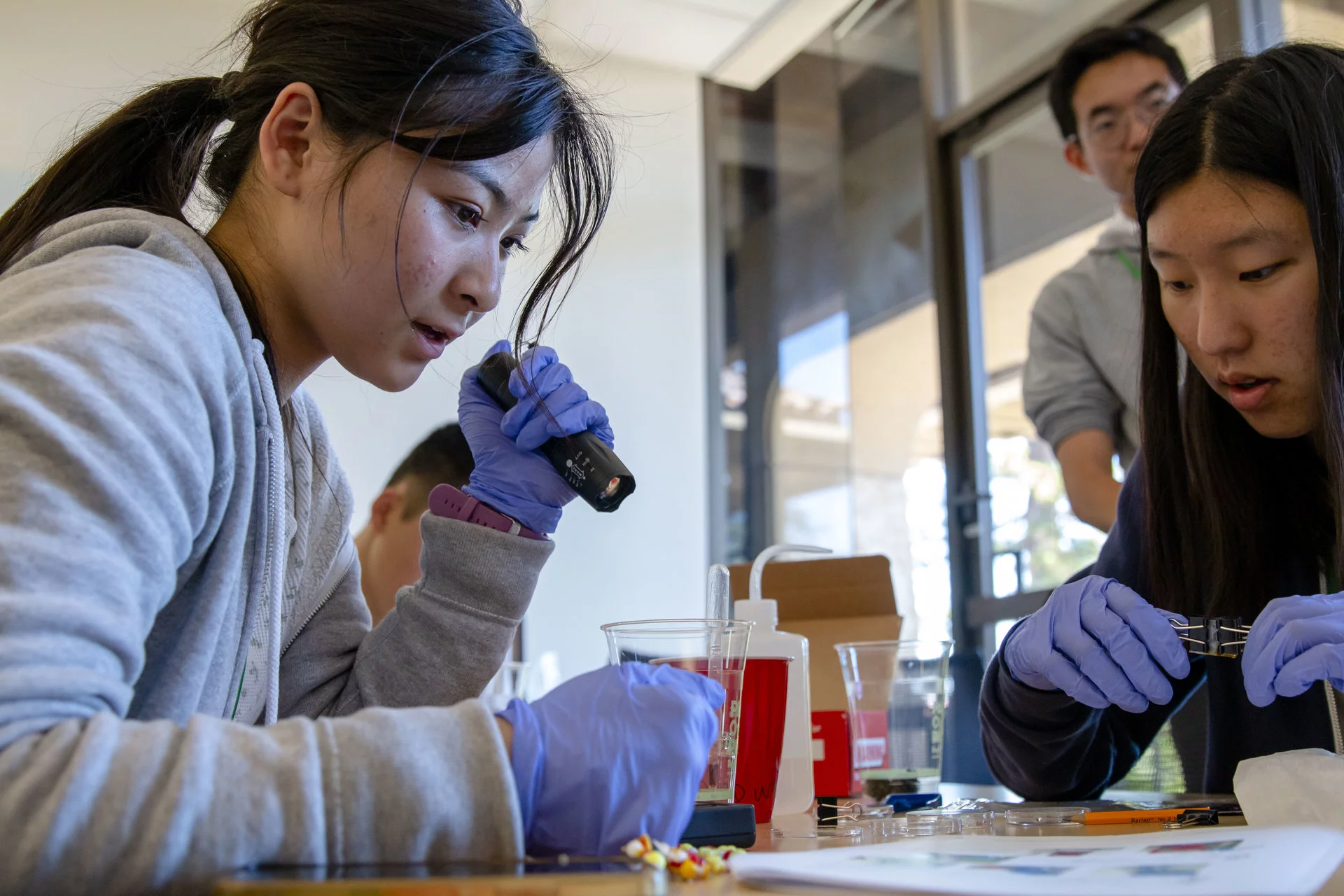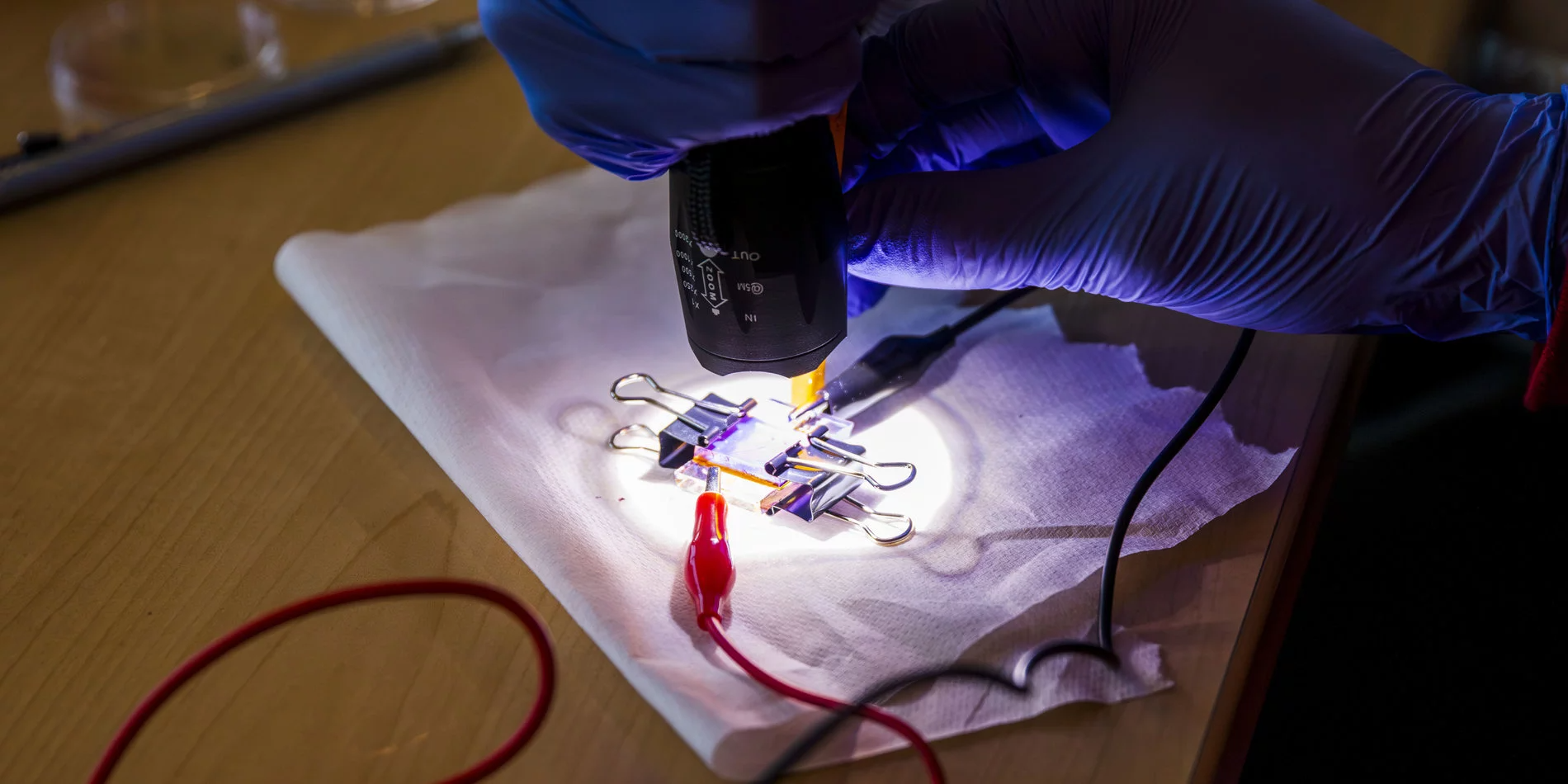Empowering the next generation of sustainable energy researchers
As pressure mounts to reduce global reliance on fossil fuels, sustainable energy engineering and battery technology offer a pathway to harness energy from renewable resources. A dedicated group of Stanford students is working beyond campus to empower the next generation of energy researchers to explore this challenging and exciting field.
Several graduate students studying battery technology in William Chueh’s lab group wanted to incorporate science outreach into their work. They noticed that traditional outreach efforts often neglected the importance of sustainable and renewable energy engineering. So, they connected with Stanford Energy Club to found Pre-collegiate Opportunities Within Energy Research (POWER) in 2020 with an aim to diversify the pipeline to sustainable energy careers. Building on existing relationships cultivated by the Education & STEM Outreach team in the Stanford Office of Community Engagement, POWER partnered with San Francisco Bay Area high schools whose populations include students from underrepresented minority and low-income backgrounds. Stanford students now regularly visit high schools to provide workshops that combine traditional instruction and hands-on activities.
“I really liked science in high school, but I got started in batteries and energy storage by chance,” said Louisa Greenburg, a Stanford PhD candidate in Materials Science and Engineering and Teaching Lead for POWER. “I want to make sure that the high school students today have that opportunity to explore energy topics and energy research, especially in the current environment, with so much enthusiasm and momentum toward sustainability and the energy transition.”
Taking high school students behind the scenes
This year, POWER expanded its reach to offer a day trip to Stanford’s campus for students from Branham High School in San Jose who have been participating in the club’s classroom workshops. The event was funded in part by the Mel Lane Student Grants Program offered through the Stanford Woods Institute for the Environment. These grants support Stanford student-driven and managed projects that make a direct impact on sustainability issues, including through community education.
The tour began with an introduction to the sophisticated tools in the Stanford Shared Nano Facilities that Stanford scholars use to test and develop novel materials for solar energy and battery storage. X-ray Photoelectron Spectroscopy helps researchers characterize the thinnest top layers of a material to better understand changes in the chemistry of a battery over the course of its lifetime. A Scanning Electron Microscope creates high-resolution images of particles about the size of a grain of pollen or smaller, which can help researchers refine the design of high-performance battery electrodes. In the colorful engineering playground of the Product Realization Lab, Stanford students prototype, troubleshoot, and iterate on projects ranging from intricate electronics to whimsical 3D-printed apparel.
Ray Radlinsky, a science and engineering teacher at Branham High School, noted the importance of coming to campus so his students can connect concepts from class to applied research. “Just seeing the equipment is really valuable, and it’s not something you could just bring to our high school,” he said.
Digging into the juicy details
Following a presentation highlighting the connections between energy and waste sorting and a networking lunch with graduate researchers, the day concluded with a challenge for the participants to bring all the concepts together.

Using only a few tools and materials – berries, binder clips, pencil graphite, and glass slides with a conductive coating – the attendees crafted solar photovoltaic cells that mimic the process of photosynthesis. In the same way that sunlight hits the green pigment in plant leaves to kick off the production of food and oxygen, the students used flashlights to excite the electrons in dye extracted from the berries. Bouncing multimeters around the room indicated the successful flow of electrical currents. When scaled up to industrial-grade solar panels, the same mechanism converts sunlight to power our everyday energy use.
Reflecting on the experience, POWER leaders recognized that positive outcomes went both ways. While the participants gained valuable insight into the world of energy research, the student organizers – still early in their academic research careers – benefited from an opportunity to think about their work in a new light.
“I'm learning how to communicate science and the things I'm interested in to people who don’t talk about it and think about it everyday. It actually makes me realize things about my work that I haven't realized before,” said Swati Narasimhan, a PhD candidate in Materials Science and Engineering and POWER’s founder and current Education Content Lead. “These kids are going to be making all the changes because they're going to feel the impacts of climate change even more than I have. So it's just fun to see them get excited and inspired.”
The POWER club also received funding for the on-campus event from the Office of the Vice Provost for Graduate Education’s Diversity and Inclusion Innovation Funds and nano@stanford. The solar cell activity was designed and led by Tracy Schloemer, a postdoctoral scholar in Electrical Engineering. Additional support for the event was provided by Juliana Lu-Yang, PhD ‘23; Xiaomian Yang, undergraduate in Computer Science and Materials Science and Engineering; Sunny Wang, PhD candidate in Chemistry; Xin Xu, postdoctoral scholar in Materials Science and Engineering; Peter Benedek, postdoctoral scholar in Chemical Engineering; and Ava Acevedo, undergraduate class of ‘26.




